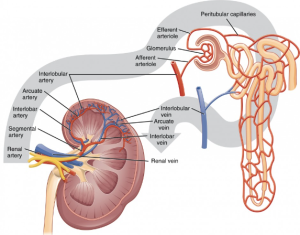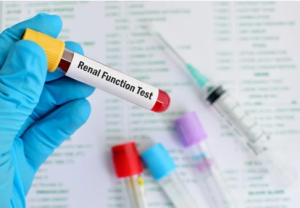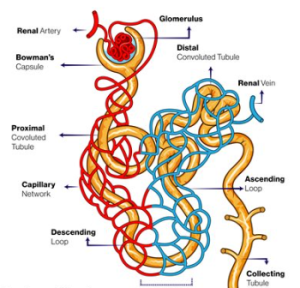4.2.1 The Triple Whammy Explained
Learning Outcomes
Be able to:
- Describe the Renin-angiotensin-aldosterone system in terms of it’s role in blood pressure regulation.
- Describe the role of angiotensin II in the regulation of renal blood flow.
- Describe the role of PGE2 on renal blood flow.
- Describe the impact of loop diuretics on blood volume.
- Apply knowledge of the pharmacology and its effect on the physiology to explain how the combination of an ACE inhibitor, an NSAID and a loop diuretic can precipitate renal failure.
Triple Whammy Explained
62-year-old female has asymptomatic fractured tooth and dentist wishes to commence an NSAID for analgesia post tooth repair/extraction.
- Brief medical and medication history:
- Hypertension – takes 10mg lisinopril (ACE inhibitor) daily
- Heart failure – lisinoprol – dual use
- Symptomatic control of heart failure – frusemide (loop diuretic)
- Pharmaceutical care problem:
-
- Combination of an ACE inhibitor, loop diuretic and NSAID will worsen heart failure and increase risk of renal failure.
- Patient is not prescribed a B-blocker for heart failure.
- Advancing age ? renal function.
- Recommendations:
-
- Continue ACE and loop diuretic at current dose.
- Cardiologist or GP: add controlled release metoprolol.
- Dentist: Avoid NSAID – use weak opioid or paracetamol for pain relief.
- Monitor renal function.
Explanation of the risk of adding an NSAID.
- Renal blood flow is mainly controlled by Prostaglandin E2 and Angiotensin2. Prostaglandin E2 causes afferent renal artery vasodilatation and increases the release of renin (which increases the production of angiotensin-2. Angiotensin-2 causes vasoconstriction of the efferent renal artery. The combination of these two increase hydrostatic pressure in the glomerulus. This increases the amount of filtrate in the renal nephron.
- Loop diuretics increase the volume of filtrate by reducing the reabsorption of sodium in the loop of Henly. Because water follows sodium, more water is retained in the filtrate and excreted. This has the effect of reducing blood volume. The reduced blood volume reduces hydrostatic pressure in the glomerulus also.
- The combination of reduced blood volume caused by the loop diuretic and the reduced hydrostatic pressure caused by the combination of an ACE inhibitor and the NSAID significantly reduces renal blood flow. This will worsen the patients heart failure (more fluid will be retained as there is very low renal blood flow and consequently very low removal of fluid) and risk renal failure secondary to reduced renal blood flow.
- The combination of an ACE inhibitor, an NSAID and a loop diuretic is colloquially known as a TRIPLE WHAMMY. in this case, the addition of an NSAID for pain relief after a dental procedure should be avoided. The video below explains the interaction between the ACE inhibitor, loop diuretic and an NSAID.
📺 Watch the following short video explaining the impact of the triple whammy on this patient (8:03 minutes)
COMMONWEALTH OF AUSTRALIA Copyright Regulations 1969 WARNING
This material has been reproduced and communicated to you by or on behalf of James Cook University in accordance with section 113P of the Copyright Act 1969 (Act).
The material in this communication may be subject to copyright under the Act. Any further reproduction or communication of this material by you may be the subject of copyright protection under the Act. Do not remove this notice.



